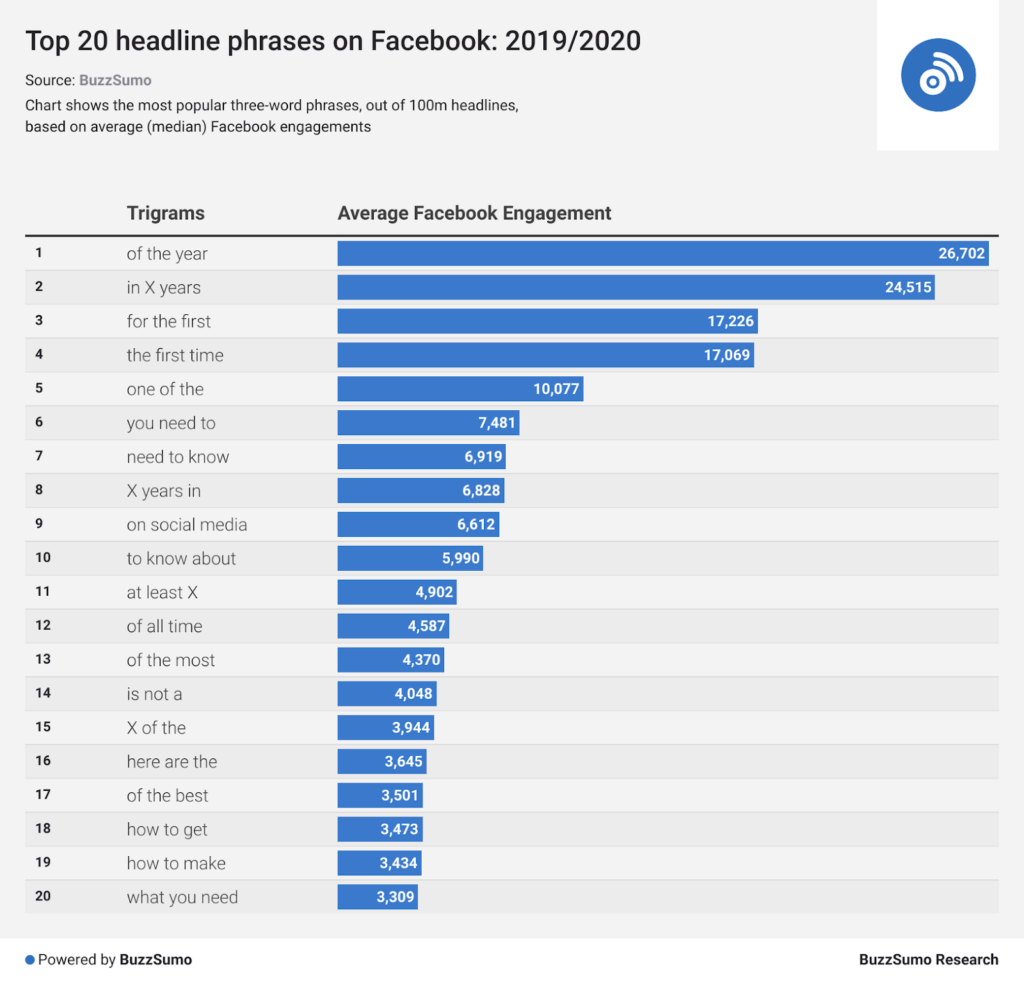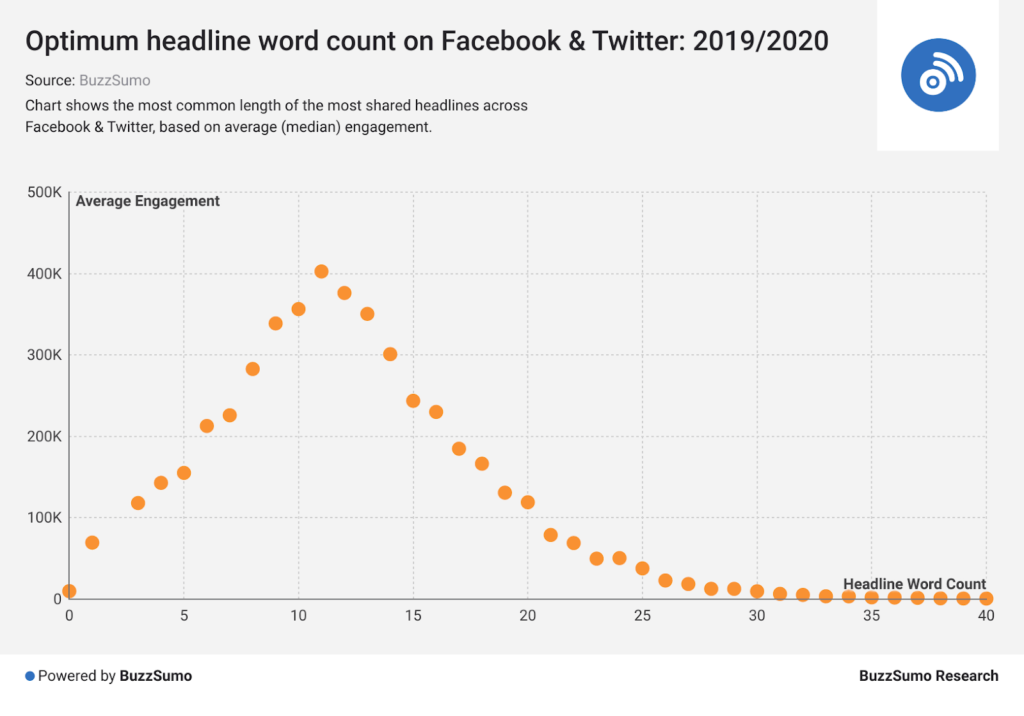Grabbing Attention with Compelling Headlines: 5 Tips for Writing Success
You can create great content, but a bad headline negates your efforts. People take a quick glance at the page and move on. Browse the page and go further… Click! That’s what any internet user does day in and day out.
Email, social media, media, or blogs – it doesn’t matter. We quickly look at all the headlines, dismiss most of them, stop at the one that seems most interesting, and click the link. It is the headline that determines whether a person will continue reading or not. Just think about it, just a few words in front of us, and we instantly decide whether to spend our time on this post, article, or video.
You can do everything by the book: create great content and put a lot of effort into promotion, and people won’t click on it because of the headline.
The same content can have different titles depending on where you’re posting it. That is, for each content format, you need to come up with a specific headline that works best. The same headline everywhere is wrong.
So, let’s get to the rules for creating good headlines.
Chapters
Promise the reader something concrete with your headline

Before a user clicks on a headline, there’s a second calculation going on in their head: so, is this worth my time? Is this content going to give me something of value that I’m willing to give a few minutes of my life for?
The headline’s job is to point out the benefit to the reader and promise them that the text is worth it. But the headline only has a few seconds to convince the reader.
The clearer the benefit, the more likely the user will click the link. Usually, long headlines make more specific promises.
When coming up with a headline, put yourself in the reader’s shoes and ask, “What’s in it for me?”. If no obvious answer comes to mind, the headline won’t work.
Use power trigrams
In 2021, Buzzsumo conducted a study examining what makes headlines effective and how they affect engagement on social media. First, the company looked at over 100 million headlines, and second, they analyzed different trigrams.
As it turned out, headlines with certain phrases motivate users more than others to be active on social networks (to give likes, click on a link, comment, and share).

If the first reaction to a headline is “it’s a fake,” then it must be redesigned. Your text should fulfill the promise that is spelled out in the headline.
Look closely at the trigrams above: they work well because they make some kind of promise. When you use them in your headline, you immediately guarantee the reader a benefit.
A great example of the headline: “X things that will make you a better marketer”.
If you find it difficult to develop a great headline after writing the article, use an online scheduler and do it later. It is better to schedule headline creation for later when you will have a clear mind. You can do it several hours later or even several days later. Of course, if you have time.
Use numbers
The main reason why users like articles in list format is that the reader has an idea in advance of the amount of content, how much time he/she will need to read, and how many thoughts the author reveals in the text. A person can quickly review the material and choose only those points that are interesting to him.
In addition, the figure stands out in the text. Therefore, we advise you to write not “Eight things”, but “8 things”.
However, numbers in the title are not only about lists. They can also point to statistics or research data. LinkedIn tested headlines without statistics and with specific numbers, and the link was clicked on better after the headline with numbers.
Ask questions
People now often search for information through voice search. In doing so, they also ask specific questions. As a result, the questions and their answers tell Google what content to give people for their queries.
Examples of headlines:
- Why aren’t ads selling? A marketer suggests 5 ways to change that
- How well versed are you in …? Test yourself
- Which articles have an impact on SEO?
- At what age does a person start to age?
By the way, experienced authors don’t write just 1 headline. They write many headlines at once. It’s better to come up with a dozen titles for any given article. Also, create different headlines for different communication channels – email, search engines, social networks, etc. Subject lines in emails require additional attention from you to be effective and avoid spam folders.
Write long headlines
This way, you can fit important promises and benefits into the headline. In the Buzzsumo study we mentioned above, long headlines perform better, at least on Facebook.

If a post’s headline has about 15 words, users are likelier to pay attention to it. Try writing a full sentence as your headline. Or even two.
Examples:
- Workaholic posture: how to take care of your posture and back health if you have a sedentary job (15 words)
- 15 habits that will take you out of your comfort zone and change your life for the better (13 words)
- How to find time to read books if you’re constantly working or dealing with kids. 10 non-obvious tips (16 words)
The longer the headline, the more likely the reader will see something useful to them in it. You can always ask Essay Tigers for help if you struggle with writing.
At the same time, we recommend writing long headlines when you’re sure they won’t get cut off. For example, on social media, on a blog. It’s better to come up with something shorter for email newsletters and search engines.
FAQ
What makes a headline compelling?
A compelling headline grabs attention, sparks curiosity, and conveys the value or benefit of the content. It’s concise, clear, and emotionally resonant, enticing readers to click and engage further.
How can I create a sense of urgency in my headlines?
To create a sense of urgency, use action-oriented words, time-sensitive language, and numbers or statistics to emphasize the immediate importance or benefit of engaging with the content.
What role does specificity play in crafting compelling headlines?
Specificity adds clarity and credibility to headlines, making them more enticing to readers. Using specific details, numbers, or examples helps set clear expectations and increases the perceived value of the content.
How can I evoke emotions with my headlines?
To evoke emotions, use powerful words and language that resonate with your audience’s desires, fears, or aspirations. Appeal to their emotions by tapping into universal feelings such as joy, surprise, or empathy.
What techniques can I use to make my headlines more intriguing?
Techniques such as posing questions, teasing secrets or insights, using wordplay or puns, and employing curiosity gaps can make headlines more intriguing and compelling, enticing readers to learn more.
Why is it important to match the tone of your headline with your content?
Matching the tone of your headline with your content ensures consistency and authenticity, building trust with readers. It also helps manage expectations and reduces the risk of clickbait or misleading headlines.
How can I leverage keywords effectively in my headlines?
Incorporate relevant keywords strategically in your headlines to improve search visibility and attract the right audience. Focus on natural integration and readability while optimizing for both search engines and human readers.
What role do headline length and formatting play in capturing attention?
Headline length and formatting impact readability and visual appeal, influencing how effectively they capture attention. Aim for a concise length that fits within the space constraints of various platforms, and use formatting techniques like bolding or punctuation to emphasize key points.
How can I test and optimize my headlines for maximum effectiveness?
Test different headline variations using A/B testing or split testing methods to identify which ones resonate best with your audience. Analyze performance metrics such as click-through rates and engagement levels to optimize headline effectiveness over time.
Can I draw inspiration from successful headlines in my industry?
Yes, studying successful headlines in your industry can provide valuable insights into what resonates with your target audience. Analyze trends, patterns, and common themes to inform your own headline strategies and adapt them to fit your unique brand voice and content objectives.
How can I use power words to enhance the effectiveness of my headlines?
Incorporate power words—words that evoke strong emotions or associations—into your headlines to make them more persuasive and attention-grabbing. Examples include “discover,” “unleash,” “transform,” and “ultimate.”
What role does headline structure play in capturing reader interest?
Headline structure influences readability and comprehension, impacting how effectively it captures reader interest. Structuring headlines with clear, concise language and compelling hooks or benefits helps engage readers from the outset.
How can I personalize headlines to resonate with my target audience?
Personalize headlines by addressing specific pain points, desires, or interests of your target audience. Tailor language, examples, or benefits to reflect their needs and preferences, increasing relevance and connection.
Is it important to align headlines with the content’s value proposition?
Yes, aligning headlines with the content’s value proposition ensures coherence and relevance, setting clear expectations for readers. Highlight the unique benefits or solutions offered by the content to attract and retain audience interest.
How can I use storytelling techniques to craft compelling headlines?
Infuse storytelling elements such as narrative hooks, conflict, or resolution into your headlines to create intrigue and captivate readers’ attention. Use evocative language and imagery to paint a vivid picture and draw readers into the story.
Should I use numbers or lists in my headlines, and if so, how?
Incorporate numbers or lists into headlines to add specificity and structure, making them more compelling and actionable. Use odd numbers, such as “7 Ways” or “Top 10 Tips,” to pique curiosity and suggest value.
Can I use humor or wit in my headlines, and if yes, how?
Yes, humor or wit can make headlines more memorable and engaging, but use them judiciously to ensure they align with your brand voice and audience expectations. Clever wordplay, puns, or unexpected twists can inject personality and charm into headlines.
How can I create headlines that address objections or skepticism?
Anticipate and address objections or skepticism in headlines by framing them as questions, challenges, or counterpoints, then offering compelling answers or solutions. Acknowledging and overcoming potential doubts builds credibility and persuasiveness.
Should I include calls to action (CTAs) in my headlines, and if so, when?
Including CTAs in headlines can be effective for driving immediate action or engagement, particularly for content intended to inform, educate, or entertain. Use action-oriented language to encourage readers to click, share, or explore further.
How can I stay updated on headline trends and best practices?
Stay updated on headline trends and best practices by monitoring industry publications, studying successful examples in your niche, and experimenting with different techniques to see what resonates best with your audience. Continuous learning and adaptation are key to crafting compelling headlines that drive results.
Conclusion
Crafting compelling headlines is essential for grabbing readers’ attention and enticing them to engage with your content. With the vast amount of online information, users tend to skim through headlines and make split-second decisions on whether to invest their time in reading further. Therefore, it is crucial to employ effective strategies to create headlines that stand out and promise value to the reader.
Master the Art of Video Marketing
AI-Powered Tools to Ideate, Optimize, and Amplify!
- Spark Creativity: Unleash the most effective video ideas, scripts, and engaging hooks with our AI Generators.
- Optimize Instantly: Elevate your YouTube presence by optimizing video Titles, Descriptions, and Tags in seconds.
- Amplify Your Reach: Effortlessly craft social media, email, and ad copy to maximize your video’s impact.